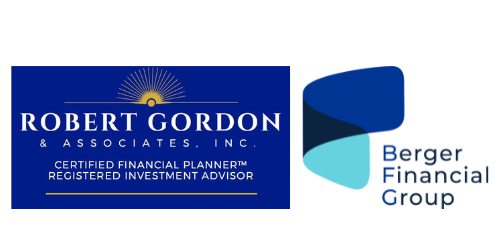How Does the SECURE Act Impact Saving After Age 70?
Submitted by Robert Gordon & Associates, Inc on July 18th, 2022
You're never too old to keep saving. And now the SECURE Act gives you added incentive—even past age 70.
According to a recent GALLUP survey, 63% of Americans plan on working part-time in retirement. And I think that makes a lot of sense. After all, working part-time not only provides some extra income, it’s also a way to stay active and engaged.
The new SECURE Act has changed how you can treat your savings after age 70. Another change is the start date for required minimum distributions (RMDs). Let’s review the RMD rules first, then take a look at the various accounts you can use for savings, beginning with IRAs, and then also look at employer plans and taxable accounts.
New RMD rules
If you don't turn 70½ until 2020, you fall under the new SECURE Act rules. You must take your first RMD by April 1st of the year after you reach 72. For all subsequent years, you must take the RMD by December 31st of the year. This includes the year in which you were paid the first RMD. In other words, you would also be on the hook for the current year’s RMD by waiting until April 1st of the following year to take your first RMD—a double hit.
This age 72 requirement is for most retirement accounts, including traditional IRAs, SEP and SIMPLE IRAs, and qualified plans such as a 401k, 403b, and 457. Roth IRAs remain exempt. More on this below.
However, others who turned age 70½ in 2019 or earlier still fall under the old pre-SECURE Act RMD rules. (According to those rules, you could defer your first RMD until April 1st of the year after the year in which you turned 70½.)
Whichever rules you fall under, it is important to pay attention because the penalty for not complying with RMDs is stiff: 50 percent of the amount that should have been withdrawn.
Traditional IRAs
Under the new SECURE Act if you have earned income, there's no age cap for contributing to a traditional IRA (previously you had to stop the year you turned age 70½). This change puts traditional IRAs on par with Roth IRAs, which never had an age cut-off.
However, contributions you make to a traditional IRA may or may not be deductible. The amount you can deduct may be limited if you or your spouse is covered by a retirement plan at work and your income exceeds certain levels. If neither you nor a spouse is covered by an employer's retirement plan, you can deduct the full amount. If you aren’t able to deduct contributions to a traditional IRA, contributing to a Roth may make more sense, assuming you fall under the income limits.
Keep in mind that those who are 70½ or older and making contributions to a traditional IRA, SIMPLE IRA or SEP IRA will still need to take RMDs, even if they’re still working.
Does it make sense to contribute to an IRA while being subject to RMDs? In short, yes. This is because RMDs require you to withdraw only a portion of these accounts. By contributing to your IRA, you're effectively replenishing your retirement savings. If you can deduct the IRA contribution, you also offset some of the tax hit from taking RMDs.
Employer retirement plans
If you’re working after age 70½ you won’t need to take an RMD from a 401(k), 403(b), or 457(b) account until you leave that employer. This can be a convenient way to save and defer taking RMDs. Expanded eligibility rules under the SECURE Act also make it easier for employers to enroll long-term part-time employees into their retirement plan.
Many employers also offer post-tax Roth 401(k)/403(b)/457(b) plans, which can be a great option. Nonetheless, keep in mind that unlike Roth IRAs, these plans are subject to RMDs if you aren’t working (in accordance with the age cut-offs discussed above).
Roth IRAs
If you’re working only part-time and you meet certain eligibility requirements, a Roth IRA can be a great option. You can continue to contribute indefinitely, and because Roth IRAs aren't subject to RMDs, your savings can accumulate tax-free for longer.
Taxable Accounts
Remember that you can always invest in a taxable brokerage account no matter your age—whether you have earned income or not. While taxable accounts don’t offer tax deductibility like traditional IRAs, aren’t tax deferred, and don’t offer the potential for tax-free earnings like a Roth, taxable accounts are eligible for 0-20 percent long-term capital gains rates—which can be lower than ordinary income tax rates. There’s also no RMD with a taxable account.
I think working part-time and continuing to save can be a winning strategy for both your financial and physical health in retirement. The extra income can help improve your lifestyle and the extra savings can help better prepare you for the unexpected. It’s never too late to save more! And now, thanks to the SECURE Act, you have more options than ever.

